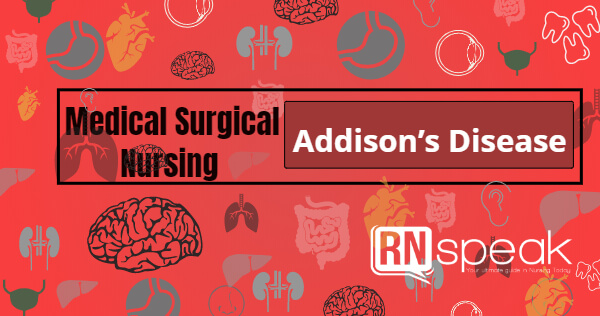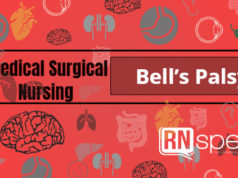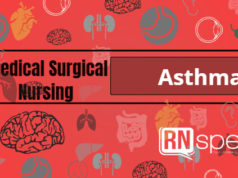Did you know that the body part responsible for controlling mineral or salt content in the blood is the same body part responsible for promoting the normal cell metabolism and producing the sex hormones both in men and women? What’s more interesting about it is how small it is compared to the huge function it does in our body. The adrenal glands are two bean-shaped portions that curves over the top of the kidneys. It is a part of the endocrine system and it is responsible for producing a number of important hormones.
Brief Anatomy of the Adrenal Glands
As mentioned above, the adrenal glands are organs that curved at the top of the kidneys. The name directly relates to their location where ‘ad’ means near and ‘Rene’ means kidneys. Hence, its name suggests it is located ‘near the kidney.’
Furthermore, the adrenal glands consist of two parts structurally and functionally namely, the adrenal cortex and the adrenal medulla. The adrenal cortex (outer portion) produces vital to life hormones such as mineralocorticoids, glucocorticoids, and sex hormones. Mineralocorticoids, mainly aldosterone, is responsible in controlling the blood’s salt content, particularly the sodium and potassium ions. Aldosterone targets the kidneys which allow it to select which minerals to reabsorb and which ones to flush out.
Glucocorticoids, the second hormone secreted by the adrenal glands, produce cortisone and cortisol which are vital in promoting normal cellular metabolism. In addition, these hormones are extremely helpful in assisting the body to resist long-term stressors by elevating the blood glucose levels in the blood. Hence, these hormones are otherwise known as ‘hyperglycemic hormones.’ Aside from body metabolism and resisting long-term stressors, glucocorticoids also have anti-inflammatory properties. Throughout life, the adrenal cortex also produces sex hormones in small amounts in both males and females.
The adrenal medulla, located at the inner portion of the gland produces adrenaline which helps the body cope with stress. Some people have the misconception of linking adrenal glands only to stress. It is not incorrect but it lacks detail on how these glands are keeping the body together even in non-stressful conditions.
Pathophysiology of Addison’s Disease
In Addison’s disease, the problem is centered at the adrenal cortex. Patients diagnosed with this condition have inadequately produced cortical hormones to meet the needs of the body. In some cases, aldosterone is insufficiently produced as well.
What’s the cause of the insufficient hormone production of the adrenal cortex? About 75% of the cases are linked to autoimmune or the idiopathic atrophy of the adrenal glands. Autoimmune causes means the body’s own immune system is mistakenly attacking its own adrenal glands. Other causes pertain to the surgical removal of the adrenal glands. Some cases are linked to adrenal glands infection as well. Among the list of diseases that might contribute to the infection of the adrenal glands Tuberculosis (TB) and histoplasmosis are the most common predisposing factors. These diseases can destroy the tissues of the adrenal glands causing hormone-production problems. Tumors can also result in adrenocortical insufficiency.
Clinical Manifestations
Signs and Symptoms of Addison’s disease include the following:
- Muscular weakness
- Nausea and vomiting
- Chronic diarrhea
- Anorexia
- Fatigue
- Emaciation
- Dark pigmentation of the skin, knuckles, knees, elbows and mucous membranes. This causes the skin to have a patchy appearance.
- Hypotension
- Decreased blood sugar or glucose
- Low sodium content in blood
- High potassium content in blood
Sodium retains fluid in the body. If the sodium content is low and potassium is extremely high for a long time, chronic dehydration may take place.
What is an Addisonian Crisis?
As the condition progresses, hypocorticism causes hypotension, and later on the patient experiences Addisonian crisis characterized by the following clinical manifestations:
- Cyanosis
- Fever
- Classic signs of shock such as pallor, apprehension, rapid and weak pulse, rapid respirations and low blood pressure (NOTE: in shock, you should remember the term hypo, tachy, tachy which means in shock there is hypotension, tachypnea and tachycardia)
- Headache
- Nausea
- Pain in the abdominal area
- Diarrhea
- Confusion and restlessness
What makes this condition dangerous and deadly is how simple overexertion, exposure to cold, or presence of acute infections can lead to circulatory collapse, shock, and worst death.
Management
Addison’s disease is treated by replacing the poorly produced hormone (corticosteroids). Hormone replacement controls the symptoms and these medicines should be taken for life. Yes, the client won’t stop taking the hormone replacements even after he or she is feeling better.
As a nurse, it is important to educate the client NEVER to skip any medication dose otherwise it may result to life-threatening reactions. Individuals with adrenocortical insufficiency are also taught on how to inject themselves with an emergency injection of hydrocortisone during stressful situations. Medical ID stating the client’s condition should also be carried anywhere he or she goes. The ID contains the medication to be given to the client in emergent situations as well as the required dose to be injected.
References
- Essential of Human Anatomy and Physiology 8th Edition, Marieb
- Medical-surgical Nursing 8th Edition, Potter and Perry
- Pathophysiology, Concepts and Applications for Health Care Professionals, 3rd Edition, Nowak, Handford








